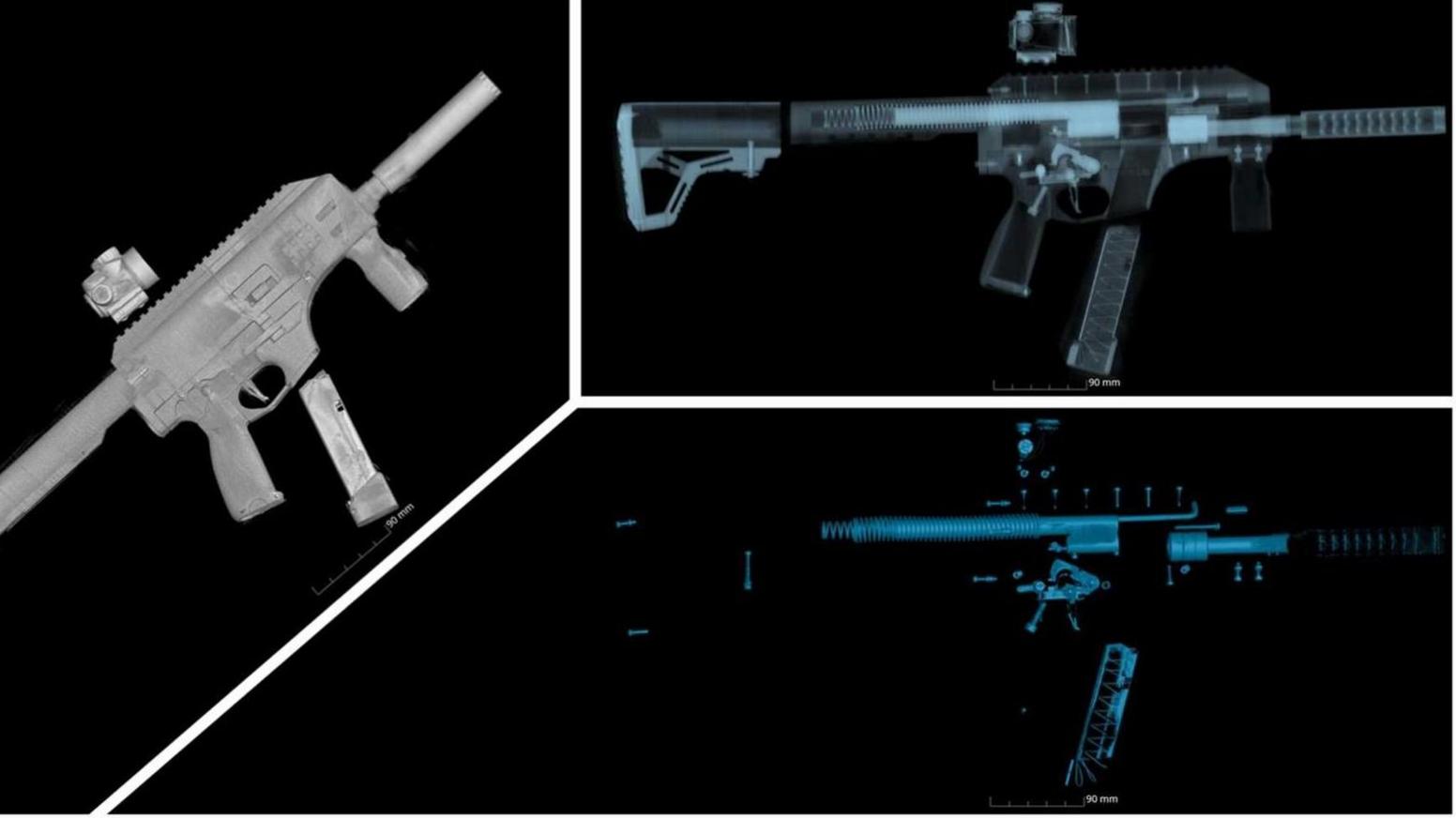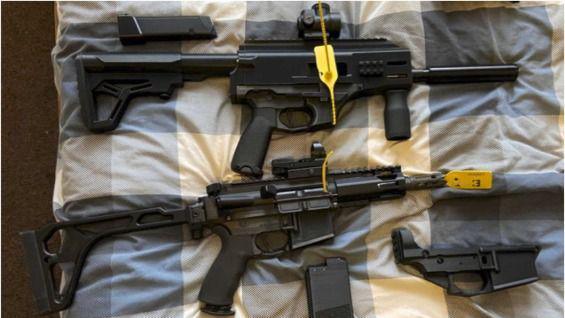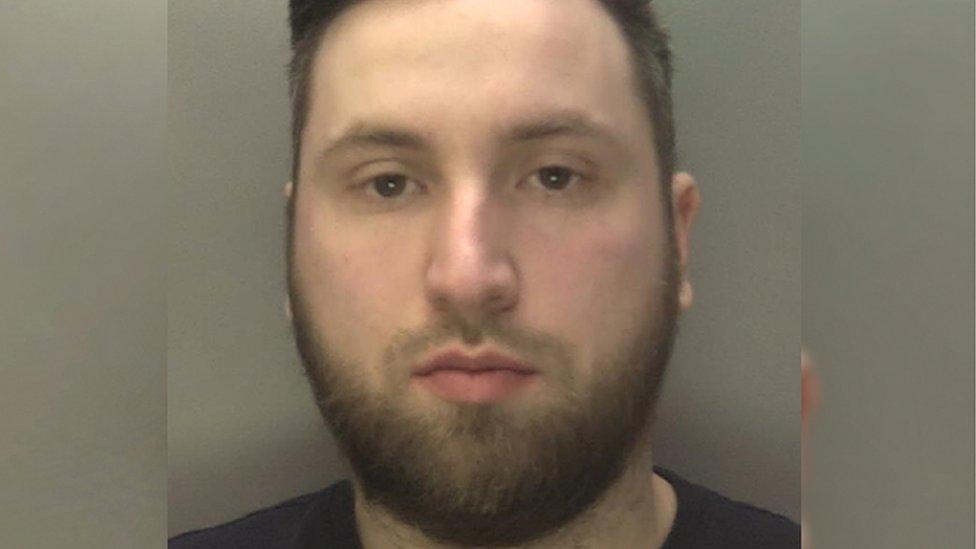How do police prove 3D-printed guns can fire?

A high-tech scanner was used to picture the inner parts of the assault rifles
- Published
When detectives from West Midlands Police seized 3D-printed assault rifles from a house in Birmingham, they faced a new challenge - how to prove they could work.
With a future jury in mind, they wanted to establish whether the guns, made out of a combination of plastic and metal, were strong enough to be used in a potentially deadly attack.
The weapons were found at the home of David Biddell-Portman in December 2020 as part of Operation Captiva, a police response designed to reduce firearm deaths across greater Birmingham.
The force said the 30-year-old had used the technology to fashion the firearms as well as other gun parts - the first discovery of its kind in the region.
To analyse the weapons, the force turned to Professor Mark Williams, an expert in 3D printing and scanning at Warwick Manufacturing Group, part of the University of Warwick.
He was able to use specialist 3D scanning machines, which are 100 times more powerful than a hospital CAT scanner, to discover the amounts of metal and plastic in each of the weapons.
The machines, which can view images in detail smaller than a human hair, analysed the different densities of the materials within each gun.
The probe showed there was enough metal in the weapons for them to withstand the forces involved with firing a bullet.
Ultimately, those findings were never put to a jury. Biddell-Portman pleaded guilty to two counts of manufacturing a firearm before the matter reached a trial, and he was jailed for five years in June 2023.
Professor Williams, who has now published a scientific paper outlining his methodology, said it was "satisfying" to see the university's technology used to help a police inquiry that resulted in convictions.

David Biddell-Portman was jailed for five years in 2023
“By making this sort of technology available to the public sector, we’re ensuring it’s not just big companies that have access to cutting edge techniques," Professor Willaims said.
“A dangerous criminal is now off the streets thanks to the efforts of West Midlands Police, and I look forward to our continuing work with them.”

Two 3D-printed assault rifles were found in a wardrobe in David Biddell-Portman's Birmingham house.
Michelle Painter, deputy head of forensics at the force, said: “This partnership is invaluable to West Midlands Police, the strength and commitment is truly unique and the boundaries are limitless.
“The application of the use of Micro CT scanning in criminal cases continues to be innovative and ground-breaking and progresses investigations and brings justice for victims.”
Get in touch
Tell us which stories we should cover in Warwickshire
Follow BBC Coventry & Warwickshire on BBC Sounds, Facebook, external, X, external and Instagram, external.
Related topics
- Published6 June 2023
